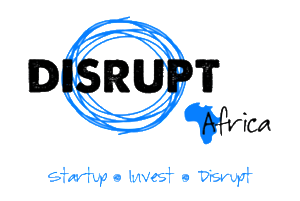The GSMA Ecosystem Accelerator Innovation Fund was launched in 2016 in order to provide selected startups in Africa and the Asia-Pacific region with grant funding, technical assistance, and the opportunity to partner with mobile operators in order to scale their products and services into sustainable businesses with positive socio-economic impact.
After selecting nine startups for its first round, the Fund is looking to support a second portfolio of a dozen mobile startups across these two regions.
In this guest post, Constance Fourquet-Mittal, insights manager at the GSMA Ecosystem Accelerator shares findings gleaned from the recently concluded application period searching for the second round of Innovation Fund investees.
The second round of the GSMA Ecosystem Accelerator Innovation Fund attracted 554 pitch applications from startups operating in 42 different countries across Asia-Pacific and Africa. This represents an increase of more than 35% compared to the first round, which closed in September 2016 (402 applications from 41 countries). This year, 82% of the applications came from Africa while 18% were received from startups operating in Asia-Pacific. We were also quite pleased to receive applications from a wider variety of countries including Papua New Guinea, Mali and Niger.
Following a thorough review of the 554 pitches, the Ecosystem Accelerator team selected the top 100 applications based on the ratings given to each start-up across a number of criteria which included their business proposition, team, funding situation and socio-economic impact.
In the top 100, the regional split is comparable to the first round with 73% of startups from Africa and 27% from Asia. As observed during the first round, most applications in Africa came from startups operating in Kenya and Nigeria. However, we noticed a higher representation of startups operating in Ghana, Uganda and Tanzania for this round. Altogether, these five countries represent more than half of the top 100 applications. When looking at applications from Asian markets, most of the startups are operating in Indonesia, Pakistan and Myanmar, with these three countries representing 18% of the top 100 applications.
Another notable insight is that more startups are working with local tech hubs or global incubation and acceleration programmes – 49%, an increase of five percentage points compared to round one. Prominent programmes in our top 100 selection include Google Launchpad, Phandeeyar Accelerator, Spring Accelerator, Co-Creation Hub Nigeria and Seedstars.
Per the Innovation Fund eligibility criteria, startups must have launched a product or service that has active users and revenue. In this year’s top 100, on average the startups have generated revenues of US$226,000 since their commercial launch (ranging from US$1,000 to US$100,000 per month), and have raised an average of US$550,000 of funding to date – a significant increase compared to last year’s findings (which stood at US$420,000). Not surprisingly given the early stage at which the fund sources startups, the majority of this funding comes from founders themselves (28%) and grants (23%), followed by investments from angel investors (17%) and venture capital firms (16%). The average team size is also bigger compared to round one (11 vs 16). What remains the same is the average age of the startups, which is about two years old.
Among the top 100 startups that applied for the second round of the Innovation Fund, 25% have been founded or co-founded by women entrepreneurs. This percentage goes up to 71% when we look at startups that have women in their management teams. Both these ratios have increased since they were at 13% and 69% respectively for the first round of the fund in 2016.
Another key eligibility criterion is that startups operate in at least one of the two innovation focus areas of the Innovation Fund which are ‘Services for MSMEs’ and the ‘Sharing Economy’. This round’s top 100 includes a larger number of startups (83%) providing mobile services for MSMEs and less (43%) with business models focusing on the sharing economy (with 26% of the top 100 startups operating in both areas). Within those two innovation focus areas, the top 100 startups are actually falling in nine different verticals, namely: fintech (24%), agri-tech (20%), e-commerce (9%), HR tech (9%), edtech (8%), e-health (7%), transport tech (7%), logistics (5%) and marketing (1%).
In the fintech sector, for example, several startups are leveraging mobile technology and data to remove barriers for small businesses to access credit. Others are facilitating digital payments management to improve financial inclusion and decrease the cost of using cash. In agri-tech, we observed that information services provided to smallholder farmers via mobile is one of the business models that has gained good traction, particularly in Africa.
Since its launch in 2015, the main goal of the Ecosystem Accelerator programme has been to bridge the gap and build synergies between mobile operators and startups in emerging markets. In this regard, it is particularly encouraging to see that nearly half of startups applying to our fund are already working with mobile operators in their local markets in one shape of form (46% vs 44% in round one). The type of support that the top 100 startups require from mobile operators is primarily covering three areas that are: customer acquisition and market insights (31%), access to mass payment channels (29%) and access to mass communication channels (22%). More details on all areas of synergies can be found in our report ‘Building Synergies: How Mobile Operators and Startups Can Partner for Impact in Emerging Markets’.
Lastly, the top 100 startups this year have a more diverse socio-economic impact as they are collectively tackling 12 of the 17 UN Sustainable Development Goals (SDGs). Five specific SDGs represent 70% of the mentions, where startups have a significant impact: decent work and economic growth (SDG 8), no poverty (SDG 1), improvement in industry and infrastructure through innovation (SDG 9), gender equality (SDG 5) and overall reduction in inequalities (SDG 10).


